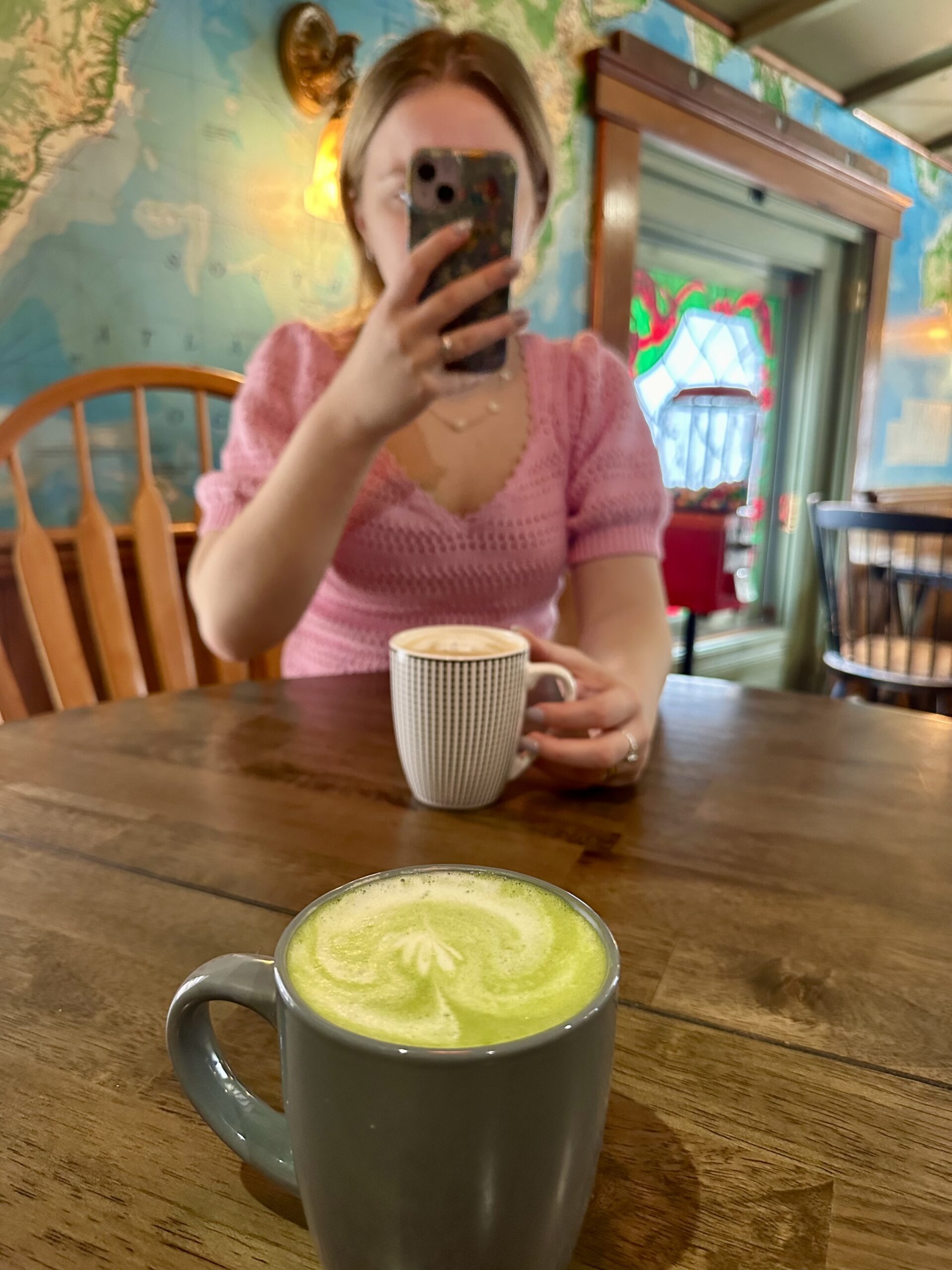
No feeling is more memorable than terror. Whether it’s nightmares from 10 years ago or a particularly scary horror movie, people remember fear. Perhaps this is why horror has created more original iconic characters than any other genre. Jason Voorhees, Michael Myers, Freddy Krueger, Ghostface and many more were all spawned as slasher villains but transcended their genres to become pop culture legends. With Halloween only 350-ish days away, it seems like the perfect time to review how these characters became murder megastars.
There’s a lot of debate over how the horror subgenre of slashers came to be in America. Alfred Hitchcock’s 1960 film Psycho was revolutionary in introducing audiences to previously taboo depictions of sex and violence on the silver screen. While Psycho impacted American audiences, Italian audiences were met with Giallo films, which were essentially bloody murder mystery movies. Inspired by these two cinematic events, the slasher was born in the 1970s.
The Texas Chainsaw Massacre (1974) and Halloween (1978) gave birth to the first horror legends. Repping the sun-baked close-quarters horror of Texas Chainsaw, we have Leatherface. Leatherface is a butcher, quite literally. Everything he uses as a means of living comes from a living creature, be it human or animal. Humans are the same as pigs to him, giving the movie a grounded, grim message, as it becomes one of the greatest explorations of humanity’s treatment of other living things. This perspective leads the movie to be considered one of the scariest horror films of all time. Even if someone doesn’t know Leatherface, they likely know the association between the horror killer and a chainsaw.
Representing Halloween, we have Michael Meyers. Michael Meyers has an incredibly bland design; he’s just a guy in coveralls and a white mask with a knife. However, Halloween was not only one of the most profitable movies of all time but also it essentially single-handedly brought the slasher film and the horror genre into mainstream pop culture. How did it do it? Similar to Texas Chainsaw, there was real substance behind Halloween’s horror. Michael Meyers’ reign of terror on the small town of Haddonfield is a forceful rejection of any sense of American security; even a peaceful, idyllic small town can have these horrible events take place. Michael Meyers’ killings lacked any sort of motive as well, showing how evil always lurks in the background. That’s why such a generic character has become an icon. He could be anyone, anywhere. What made the horror characters of the 1970s scary was not only their physical designs, but also the messages behind them.
The 1980s saw the rise of more fantastical and less intentional horror characters, most notably in the forms of Freddy Krueger and Jason Voorhees. Freddy Krueger from A Nightmare on Elm Street (1984) is the manifestation of nightmares: a monster with knives for fingers that terrorizes and murders people in the same way that a child plays with their food. Jason Voorhees, from the Friday the 13th series, is perhaps the most notable horror icon, known for his hockey mask and machete.
However, as every horror nerd will tell you, spoilers for the first Friday the 13th movie, he is not the killer in the first movie and does not gain his iconic hockey mask until the third movie in the franchise. In my opinion, the whole Friday the 13th series was made as a cash grab to piggyback off the success of Halloween, and it shows. There’s not a lot going on behind the hockey mask. The messages of the 1970s horror movies had been replaced with pandering moralization. You drink, you die. You have sex, you die. You smoke, you die. These franchises only worsened this hollow message by making the films increasingly ridiculous, thus turning the genre into a laughing stock. The 10th Friday the 13th movie takes place in outer space while Freddy Krueger became more known for his quips than for being scary. These characters caught on in pop culture by riding a wave of what those who came before them had done and nearly ruined the genre for it.
Thankfully, Wes Craven’s Scream single-handedly rescued and revitalized the slasher in the 1990s. All the ‘80s tropes were not just turned on their head, they were outright mocked. Specifically, the moralizing rules on how to not die were directly laid out for the characters and the audience to laugh at. The formula was also changed, as instead of a supernatural or superhuman killer, the killers were just regular people. This change also gave the movie a murder mystery element to it, further refreshing the genre. Examining the underlying cultural attitudes and tropes behind the whole genre while recontextualizing them is perhaps why Ghostface became so iconic. The terror came from disproving the assumption that knowing the rules saved yourself. The Ghostface mask went on to become a classic symbol of the genre. The influence Scream had in the ‘90s is hard to understate. Slasher movies stopped being moralistic bores, instead embracing referential humor and murder mystery aspects.
The 2000s and 2010s were the worst decades for slasher movies. Instead of creating anything fresh, most of the new movies were just remakes of what had come before. Often, these movies were quite bad too, as the early 2000s saw the rise of extremity in film, focusing on shocking and over-the-top depictions of violence. The most notable movies of this type were Saw and Hostel. However, just like the slashers of the 1970s, one should note that there was real substance behind the extremity – it was not just gore for the sake of gore.
How does this relate to the slasher? Well, the remakes that were plaguing the genre began to embrace this extreme gore. Remaking movies from decades ago as well as chasing modern trends made these movies come off as soulless. It did not help either that these films took themselves so seriously, especially after Scream had revitalized the genre by embracing lightheartedness. Everything just became bland and, frankly, uniconic. The latter part of the 2010s saw the rise of legacy remakes, movies that tried to pay more homage to the original movies than the previous reboots did. Often, these movies would bring back the original actors and ditch the gory extremity, seriousness and mean-spirited nature.
However, a critical aspect was still missing. These movies lacked any real soul, with one-note characters, haphazard plotting and a complete lack of any creative vision. The genre falling to remakes meant the characters did as well. With the notable exception of Ghostface in Scream, every other character I’ve mentioned has had their franchise end. The movies and the characters lost their appeal and stopped being iconic.
The 2020s have given us the first original slasher icon since the 1990s, in the form of Art the Clown. The recently released indie horror movie Terrifier 3 (2024) grossed nearly $70 million and even debuted at No. 1 on the domestic box office charts, beating out significantly more mainstream movies like Joker: Folie à Deux and Beetlejuice Beetlejuice. Notably, the movie definitely does not have mass appeal, as it often comes off as mean-spirited and extremely gory. So how did it become so popular? Art the Clown, the main killer in the franchise, has taken on a life of his own, becoming a symbol of the genre just like the Ghostface mask. His design instantly became iconic, but what really set him apart was his personality. Art the Clown is like a combination of Charlie Chaplin and Jeffrey Dahmer. His actions are horrific, but he does them with a slapstick, over-the-top manner that makes him come off as truly unique. The draw of his character is so strong that it led to Terrifier 3 being a box office miracle. Art the Clown proves that creatives’ abilities to make iconic horror characters is not dead and that the world still has an appetite for them.
Will we see a wave of Art the Clown copies similar to the 70s and 90s? Maybe, but one thing is certain: the future of the slasher, previously in crisis, is now bright.



